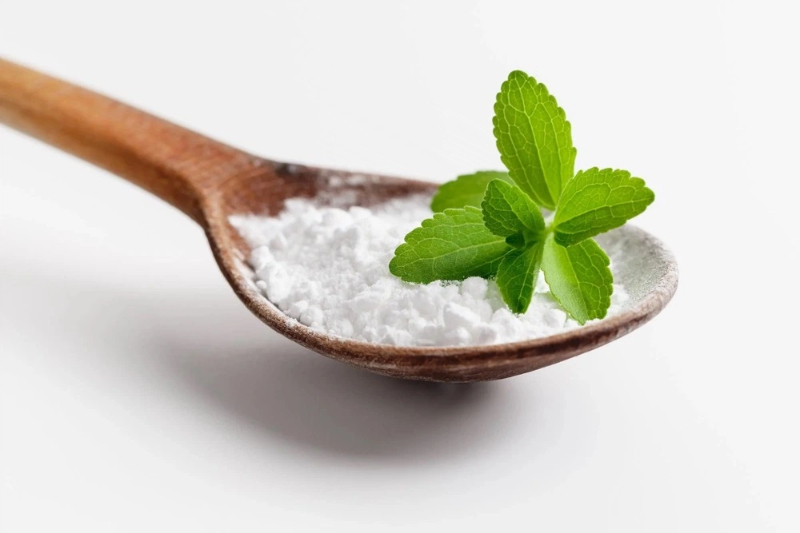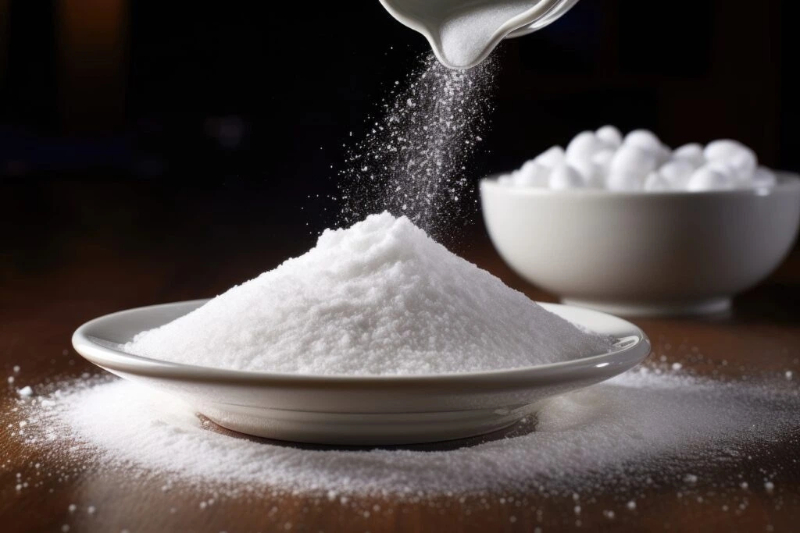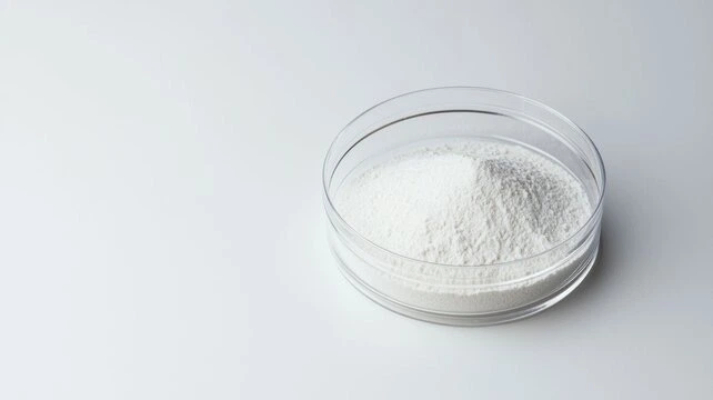







Content Menu
● Aspartame overview and historical context
● Regulatory status and exposure guidelines
● Hazard identification versus risk: IARC vs. regulatory ADI
● Diverse findings and ongoing debates
● Biochemical mechanisms and interpretation
● Neurocognitive and long-term health considerations
● Public health communications and consumer understanding
● Aspartame in the context of a diversified sweetener portfolio
● Population-specific considerations and labeling challenges
● Implications for manufacturing and formulation
● Case studies and industry perspectives
● Addressing common myths and concerns
● FAQ
>> 1. What is aspartame, and how is it used in foods and beverages?
>> 2. What does the IARC Group 2B classification mean for consumers?
>> 3. What is the FDA's stance on aspartame safety?
>> 4. Are there health concerns beyond cancer risk associated with aspartame?
>> 5. How should PKU patients manage aspartame-containing products?
Aspartame has long been a staple in the global food and beverage landscape, offering a potent, calorie-free sweetness that helps people manage sugar intake without sacrificing taste or texture. For manufacturers delivering health-focused solutions—especially those specializing in natural sweeteners, functional polyols, and dietary fibers—understanding the safety profile, regulatory status, and evolving science surrounding aspartame is essential to product development, labeling, and consumer communication. This article surveys what is known about aspartame's safety, addresses prevalent concerns, and highlights practical implications for formulation, regulatory compliance, and marketing. Throughout, the discussion weaves together regulatory assessments, scientific evidence, and industry perspectives to provide a balanced, actionable view for decision-makers in health-oriented manufacturing.

Aspartame is a low-calorie artificial sweetener composed of phenylalanine and aspartic acid linked to a methyl ester. It is approximately 200 times sweeter than sucrose, which enables very small quantities to provide desired sweetness with minimal caloric contribution. Its widespread use spans beverages, dairy products, confectionery, chewing gums, and even some pharmaceuticals. For a health-focused portfolio, aspartame represents one tool within a broader toolkit that includes natural sweeteners, functional polyols, and fiber-enriched formulations. The safety assessment of aspartame rests on toxicology, epidemiology, metabolism, and exposure modeling, integrated into regulatory decisions and labeling guidance. The ingredient's durability in product lines across markets underscores the importance of robust QA, supplier auditing, and transparent consumer communication.[2][10]
Regulatory bodies worldwide have established acceptable daily intake (ADI) levels for aspartame to protect long-term exposure. While ADI values vary by jurisdiction, they typically reflect tens of milligrams per kilogram of body weight per day, with local adjustments based on new data and risk assessment methodologies. For manufacturers, tracking cumulative exposure from multiple products and considering sensitive populations in risk assessments and labeling are essential. In practice, products marketed internationally may need bilingual or multilingual labeling that clearly indicates total sweetener content and, where applicable, phenylalanine information for individuals with PKU.[4][8][2]
In hazard identification terms, aspartame has been classified by some authorities as “possibly carcinogenic to humans” (Group 2B by IARC), reflecting limited evidence of a potential association with cancer in humans. This designation describes hazard potential, not a precise risk at typical dietary exposures. Regulatory bodies such as FDA or EFSA maintain that consumption within established ADIs does not present a known health risk to the general population. The distinction between hazard and exposure risk is critical for product developers: it shapes how risks are communicated to consumers and how marketing claims are structured, particularly in regions with stringent labeling requirements. This nuanced framework supports informed product design, where brands may choose to blend aspartame with other sweeteners to address taste, stability, and consumer perception while staying within regulatory boundaries.[1][8][2]
A robust body of literature covers the safety profile of aspartame from multiple perspectives, including toxicology, cancer epidemiology, neurology, and metabolism. Many reviews conclude safety within established exposure limits, while other studies and editorials raise questions about potential associations with certain health outcomes or neurocognitive effects. This spectrum of findings highlights the importance of context: dose, duration of exposure, co-exposures with other dietary factors, genetic predispositions, and health status. For industry stakeholders, communicating this nuance—clearly stating what is known, what remains uncertain, and what is being monitored—supports consumer trust and regulatory compliance.[5][10][11]
Aspartame metabolizes into phenylalanine, aspartic acid, and methanol. Mechanistic studies explore how these metabolites interact with metabolic pathways, signaling networks, and cellular processes. Some research suggests potential pathways by which exposure could influence cellular growth, differentiation, or oxidative stress under certain conditions. However, translating these mechanistic insights into real-world risk requires careful consideration of actual intake levels, bioavailability, and population differences. For product developers, the key takeaway is that mechanistic data enrich risk assessments but must be integrated with exposure estimates and clinical outcomes to guide regulatory decisions and consumer messaging.[3][12]

Emerging investigations have begun to address potential neurocognitive effects associated with artificial sweeteners, including aspartame, though findings are not yet conclusive. Some studies report associations with transient cognitive changes or mood-related symptoms in select populations, while others find no significant effects at typical exposure levels. Given the complexity of brain function and the influence of myriad lifestyle factors, these results warrant cautious interpretation and replication in diverse cohorts. For manufacturers, such findings emphasize the value of clear labeling and avoidance of overreaching health claims, while continuing to monitor high-quality research for any product-relevant implications.[6][5]
Public trust in food safety stems from transparent communication about risk, uncertainty, and practical implications. Authorities generally maintain that, when consumed within established ADIs, aspartame does not pose a known health risk for the general population. For individuals with PKU, phenylalanine content in products containing aspartame is a key labeling concern, necessitating clear warnings and alternative options. Brands can bolster credibility by presenting evidence-based summaries, providing consumer education resources, and ensuring labeling accuracy. This approach aligns product strategy with market expectations and regulatory mandates across regions.[10][4]
A well-rounded health-solution strategy often relies on blending sweeteners to achieve desired taste, mouthfeel, and shelf stability without overreliance on a single additive. Your factory's strengths—natural sweeteners, functional polyols, and dietary fibers—can be integrated with aspartame to form targeted blends that meet flavor, label, and regulatory requirements. For example, a blend that combines a natural sweetener with a low-calorie polyol and a measured amount of aspartame (where permitted) can deliver balanced sweetness, improved mouthfeel, and reduced aftertaste while maintaining compliance across markets. Rigorous supplier qualification, batch testing, and comprehensive documentation are essential to sustain safety and quality across production runs.[13][2][10]
Different population groups may respond differently to sweeteners, underscoring the importance of tailoring product development and labeling. People with PKU must avoid phenylalanine-containing products, making PKU labeling an essential feature in relevant markets. Pregnant individuals, children, the elderly, and those with metabolic conditions may have particular considerations, which should be addressed through medical guidance and clear consumer information. As part of a responsible product strategy, manufacturers should implement robust QA programs, ensure traceability of ingredients, and maintain transparent, accessible consumer education about sweetener choices.[2][4][10]
- Ingredient strategy: Treat aspartame as one component within a broader sweetener system, prioritizing blends that optimize sweetness perception, mouthfeel, and stability while aligning with regulatory requirements.
- Regulatory and labeling: Ensure correct listing of sweeteners, PKU-related information where required, and adherence to local ADI guidance and consumer labeling standards.
- Quality assurance and supply chain: Establish rigorous supplier qualification, raw material testing, and batch-wide QA protocols to guarantee consistency, safety, and traceability.
- Consumer communication: Offer science-based explanations of safety within approved intake levels and provide balanced information about ongoing research and uncertainties.[4][10][13]
Across beverages, dairy, and confectionery, aspartame remains a practical option for achieving low- to zero-calorie sweetness without sacrificing flavor. Companies frequently employ blends to mitigate aftertaste and bitterness, while emphasizing portfolio diversity that includes natural alternatives and low-calorie options. Transparent communication about sweetener choices can bolster brand credibility in global markets that require detailed ingredient disclosure and third-party verification. These case considerations provide actionable lessons for product developers seeking to harmonize taste, health objectives, and regulatory adherence.[14][10][13]
- Myth: Aspartame causes cancer in all exposure scenarios. Reality: Hazard classifications (such as Group 2B) describe potential hazards under certain conditions, not a universal risk at typical intake; regulatory bodies generally support safety within ADIs. This distinction is crucial for consumer education and for responsible marketing communications.[1][4]
- Myth: Aspartame is unsafe for most people. Reality: For the general population without PKU, consumption within established ADIs is considered safe by major health authorities; PKU requires avoidance due to phenylalanine content.[10][4]
- Myth: All studies agree on safety. Reality: The literature shows a spectrum of findings; many reviews support safety at approved levels while acknowledging ongoing debates and the need for continued research.[11][10]
- Myth: New studies overturn decades of safety data. Reality: Regulatory reviews continually assess new evidence; changes in guidance occur only when cumulative evidence shifts consensus.[12][10]
Aspartame maintains a long-standing place in the global menu of low- and zero-calorie sweeteners, supported by extensive safety evaluations and regulatory oversight when consumed within established ADIs. While hazard assessments (such as IARC Group 2B classifications) prompt ongoing scientific inquiry, the consensus among major regulatory agencies is that typical consumer use remains within safe exposure limits. For health-focused manufacturers, the strategic takeaway is to integrate aspartame into a broader, well-documented sweetener portfolio—blending it with natural sweeteners, functional polyols, and dietary fibers—to meet taste, regulatory, and consumer expectations across diverse markets. This approach supports product quality, market accessibility, and consumer trust, all while maintaining rigorous QA, transparent labeling, and responsible communication about ongoing research and uncertainties.[1][4][2]

Aspartame is an artificial sweetener mainly used in sugar-free beverages, foods and medicines to provide sweetness, while providing almost no calories.
The IARC's 2B classification indicates that the substance "may be carcinogenic to humans", but the evidence is limited and the risk is extremely low compared to the regular doses that consumers are exposed to daily. There is no need to panic about this.
The FDA considers aspartame safe for the general population when consumed within approved acceptable daily intake levels.
Yes, apart from the risk of cancer, the health concerns about aspartame mainly involve possible neurological reactions such as headaches and may have an impact on specific metabolic groups.
Patients with PKU must strictly avoid consuming food and beverages containing aspartame, as it can be converted into phenylalanine in the body and aggravate the condition.
[1](https://pmc.ncbi.nlm.nih.gov/articles/PMC12286081/)
[2](https://www.who.int/news/item/14-07-2023-aspartame-hazard-and-risk-assessment-results-released)
[3](https://www.foodwatch.org/en/new-studies-reinforce-health-concerns-over-aspartame-but-eu-action-still-missing)
[4](https://www.fda.gov/food/food-additives-petitions/aspartame-and-other-sweeteners-food)
[5](https://pubmed.ncbi.nlm.nih.gov/40608001/)
[6](https://www.cnn.com/2025/09/03/health/artificial-sweetener-cognition-wellness)
[7](https://www.foodadditivesasia.com/market-insights/aspartame-2025-health-debates-science-market-trends)
[8](https://www.efsa.europa.eu/en/topics/topic/aspartame)
[9](https://www.louisianacancercenter.org/news/aspartame-toxic-or-not)
[10](https://pmc.ncbi.nlm.nih.gov/articles/PMC10459792/)
[11](https://pmc.ncbi.nlm.nih.gov/articles/PMC8227014/)
[12](https://www.nature.com/articles/s41598-024-62461-w)
[13](https://www.caldic.com/zh-hans-cn/markets/food-beverage/beverage/)
[14](http://www.danone.com.cn/about-danone/at-a-glance/danone-china.html)
